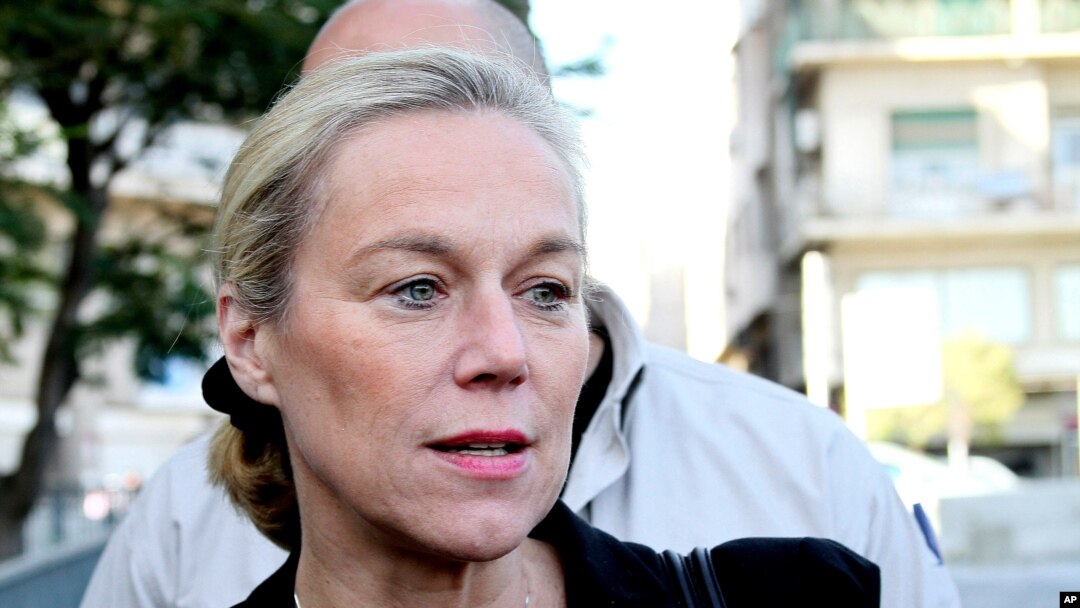UNITED NATIONS —
The official in charge of coordinating the destruction of Syria’s chemical arsenal says work is progressing toward moving the poison agents out of the country so they can be safely destroyed.
Sigrid Kaag, the Special Coordinator of the joint U.N.-Organization for the Prohibition of Chemical Weapons (OPCW) mission, said preparations have been made to safely package and transport containers of chemical agents from Syria’s Mediterranean port of Latakia to a second port - not identified - where it will be transferred to a U.S. naval vessel and destroyed.
“What can be done, needs to be done, is currently happening in order to ensure that logistically - in terms of safety of packaging of the chemical agents, the repackaging, the preparation of containers, is that on track? Yes, that is on track. And all the logistical requirements that we’ve asked for as a joint mission in support of the implementation is in country," said Kaag.
Last week, the United States told the OPCW that it is ready to contribute the technology to destroy Syria’s deadly chemical agents. They are due to be removed from the country by December 31.
The neutralization will be done, on an American ship at sea, with hydrolysis, a process that uses water and other agents to break down chemicals. A U.S. naval vessel is currently being fitted to support the operation.
Speaking to reporters after a closed briefing to the United Nations Security Council, Kaag said the chemical agents will be packaged in accordance with international maritime standards for hazardous goods.
She expressed concern about the volatile and unpredictable situation on the ground affecting the mission, noting that travel on Syria’s roads is often dangerous and not always feasible. She said that on a visit to the port of Latakia, she had to travel to neighboring Lebanon and then go by helicopter since a main road was cut off.
Kaag said the mission has received limited funding and more is necessary. She estimated out-of-country costs for destroying Syria’s chemicals at between 35 and 40 million euros ($47 million to $54 million).
In September, the Security Council demanded the destruction of Syria’s chemical weapons after Western countries blamed the government for an August 21 poison gas attack that killed some 1,400 people near Damascus.
Sigrid Kaag, the Special Coordinator of the joint U.N.-Organization for the Prohibition of Chemical Weapons (OPCW) mission, said preparations have been made to safely package and transport containers of chemical agents from Syria’s Mediterranean port of Latakia to a second port - not identified - where it will be transferred to a U.S. naval vessel and destroyed.
“What can be done, needs to be done, is currently happening in order to ensure that logistically - in terms of safety of packaging of the chemical agents, the repackaging, the preparation of containers, is that on track? Yes, that is on track. And all the logistical requirements that we’ve asked for as a joint mission in support of the implementation is in country," said Kaag.
Last week, the United States told the OPCW that it is ready to contribute the technology to destroy Syria’s deadly chemical agents. They are due to be removed from the country by December 31.
The neutralization will be done, on an American ship at sea, with hydrolysis, a process that uses water and other agents to break down chemicals. A U.S. naval vessel is currently being fitted to support the operation.
Speaking to reporters after a closed briefing to the United Nations Security Council, Kaag said the chemical agents will be packaged in accordance with international maritime standards for hazardous goods.
She expressed concern about the volatile and unpredictable situation on the ground affecting the mission, noting that travel on Syria’s roads is often dangerous and not always feasible. She said that on a visit to the port of Latakia, she had to travel to neighboring Lebanon and then go by helicopter since a main road was cut off.
Kaag said the mission has received limited funding and more is necessary. She estimated out-of-country costs for destroying Syria’s chemicals at between 35 and 40 million euros ($47 million to $54 million).
In September, the Security Council demanded the destruction of Syria’s chemical weapons after Western countries blamed the government for an August 21 poison gas attack that killed some 1,400 people near Damascus.



